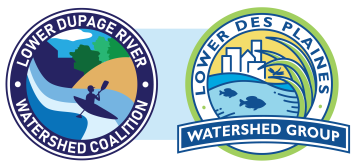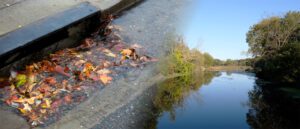During storms, water is usually absorbed into natural surfaces like soil and vegetation. However, if the stormwater lands on a hard surface such as sidewalks, roadways and rooftops, the stormwater cannot be absorbed and will run-off, likely to a nearby stormwater detention basin. Detention basins, or detention ponds, collect and store stormwater to prevent flooding and erosion of local waterways.
These detention basins can be found near residential and commercial areas. They can create a beautiful environment for homeowners to enjoy and increase property value as a result. However, if the detention pond is not maintained, it can become unsightly and lose function. Homeowners Associations (HOAs) are responsible for the maintenance of their stormwater ponds, but it is important to note that residents also impact the condition of detention basins.
Another reason residents should consider their impact: Detention basins release water to local waterways, so the condition of detention ponds affects water quality, the health of your local watershed and of your community.
5 ways you can impact detention basins:
1. Trash
Trash that is not disposed of properly can be picked up by stormwater run-off and washed into the detention basin. Large amounts of trash in the detention pond will accumulate in water inlet and outlet pipes and block water flow. Any trash in the detention pond can also end up in local waterways, which has a broader impact on the health of the watershed and your community.

2. Herbicides, pesticides, and fertilizer
Stormwater run-off will introduce chemicals used on lawns into the detention basin. Since this source of water is not cleaned by a water treatment plant, chemicals washed into the detention basin will eventually end up in our local waterways. These chemicals harm aquatic life and wildlife that live in and around that body of water.
3. Yard waste
Dumping leaves and grass clippings into the water (or storm drains that lead to detention ponds) will also block the water inlet and outlet pipes of the detention pond and decrease the flow of water. These materials will also increase the amount of nutrients in the water. When a large amount of nitrogen or phosphorous are present in the water, algae rapidly multiply (called algae bloom) and turn the water green.

4. Over-mowing near detention ponds
Native vegetation near the detention basin deters any pesky wildlife, like geese, limits the amount of chemicals and debris that enter the basin, and prevents shoreline erosion. Mowing too close to the shoreline can facilitate erosion and deterioration of a detention pond.
5. Pets
Any pet waste that is left on the ground can be picked up by stormwater run-off and introduced into the detention basin. Animal waste contains bacteria and nutrients that will degrade the water quality and affect aquatic life living in the detention basin.

How you can sustain an effective and beautiful detention basin:
- Properly dispose of trash and recyclables. When taking walks around your neighborhood, consider picking up litter to prevent it from ending up in the detention pond.
- Do not dump anything into the detention pond or storm drain and be mindful of how you dispose of yard waste.
- Limit chemical use to what is necessary (and reduce usage if possible!).
- Keep grass long near the shoreline of the detention pond.
- Be responsible for picking up your pet’s waste.
- Talk to your HOA about planting a native buffer. A vegetative buffer of native plants around a detention basin can beautify your neighborhood while preventing contaminants, like chemicals, litter, and pet waste, from reaching the water.
- Educate your neighbors about the purpose of a detention basin and how our everyday actions can have an impact. Share how they can contribute to a well-functioning detention basin that regulates stormwater run-off while adding aesthetic value to your neighborhood!




